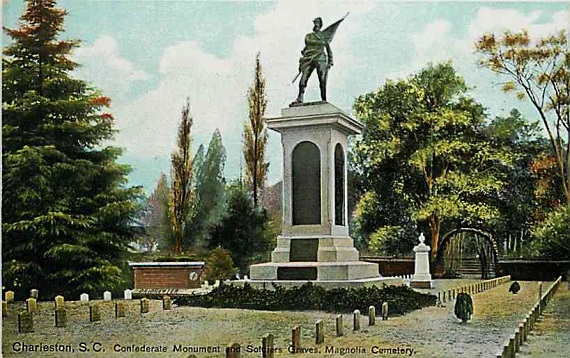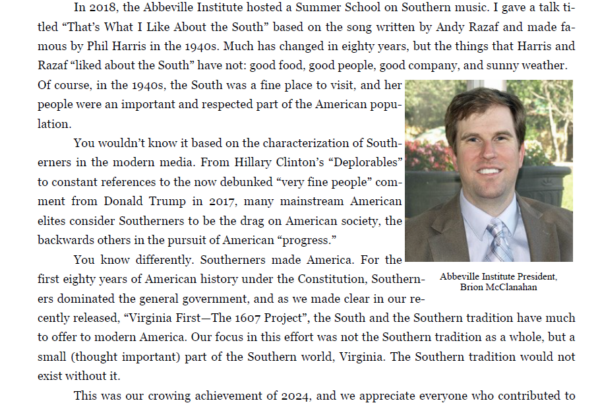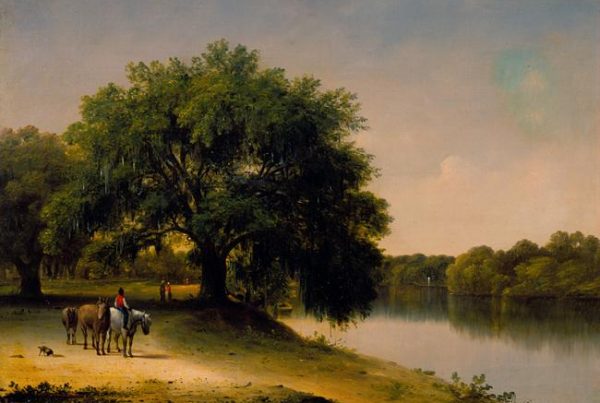A new video entitled “Was the Civil War About Slavery?” from Prager University is currently making the rounds on the Internet. A caption claims that the video “settles the debate once and for all,” superseding over a century’s worth of scholarship by historians who have argued this matter.
But does it really?
The video is filled with misconceptions and myths about the Civil War. The few facts it does get right are vastly outnumbered by the promulgation of incessant fallacies and significant omissions that would severely contradict the narrative.
It is true that several states in their secession ordinances claimed the reason for seceding from the government concerned slave rights. However, this was not the case for the mid-south states, which definitively rejected secession on those grounds and provided different explanations for leaving the union. Tennessee, Arkansas, Virginia, and North Carolina departed from the union only after Lincoln resupplied Fort Sumter and pledged to raise an army of 75,000, while Congress was not in session, with the express purpose of invading other states.
Notwithstanding the fact that some slave states mentioned slavery in their secession ordinances, this pronouncement was not as universal as is commonly believed. For instance, the secession ordinances of Georgia, Florida, Louisiana, Arkansas, North Carolina, and Tennessee do not mention slavery or the slave motive at all. Arkansas’ secession ordinance suggests the primary reason it announced its withdrawal from the union was Lincoln’s proclamation “to the world that war should be waged against such States until they should be compelled to submit to their rule.” In October 1861, the separatist government of Missouri passed an ordinance which charged that the United States had:
“violated the compact originally made between said Government and the State of Missouri, by invading with hostile armies the soil of a State, attacking and making prisoners the militia while legally assembled under the State laws, forcibly occupying the State capitol, and attempting through the instrumentality of domestic traitors to usurp the State government, seizing and destroying private property, and murdering with fiendish malignity peaceable citizens, men, women, and children, together with other acts of atrocity.”
The film asserts that “The secession documents of every southern state made clear, crystal clear, that they were leaving the union in order to protect their “peculiar institution” of slavery.” This is a bold-faced lie, and a cursory 5 minute glance at the secession ordinances tells a different tale. While some of the states in the Deep South articulated that they were leaving the union because they feared the dissolution of slave rights, the union government did not attempt to impose any anti-slavery legislation at all. In fact, northern officials continued to assert that they would not interfere with slavery where it already existed. The entirety of the debate concerning the expansion of slavery from the 1820s-1850s was predicated on the potential for slavery to expand into the western territories, not its existential presence in the slave states.
The video claims that “state’s rights” is a faulty argument because it implies that the southern states were seeking only the right to maintain slavery. Notwithstanding the fact that states don’t have rights (only powers), the southern states clearly sought to invoke the same principles that were employed to sever all political ties with Great Britain – secession. Lincoln was perfectly willingly to accept the “state’s right to slavery” in the slave states that remained in the union (Delaware, Maryland, Kentucky, Missouri), but of course the film doesn’t mention that.
The video objects to the idea that economics played any role in the conflicts that led up to secession and the war, but for the south this was a paramount truth. In the decades prior to the Civil War, the south was constantly hampered by protectionist tariffs. In 1828, the Whigs employed the Tariff of Abominations, which destroyed the agrarian economy of the south. This was such a controversial issue that Andrew Jackson encouraged the passage of the Force Bill, which would allow him to invade South Carolina to enforce the tariff. When it came to the 1860s, the issue reared its ugly head again in the form of the Morrill Tariff, which raised the rates to a huge extent and caused additional controversy in an already fractured time. For many in the south, enough was enough. British sentiment at the time corroborated this, as the policy served to punish free trade with European powers as well. While the video suggests that the north was hurt economically by not maintaining slavery, they benefitted completely to the detriment of the south by the protectionist policies the government implemented.
Outside of the political circumstances that led to the secession of several states, a large cross section of the personal writings of southern soldiers shows that support for slavery was a rare motive for most actors. This can be demonstrated even by the writings of James McPherson, an extremely pro-union historian, in his book What They Fought For. Based on an unprecedented study of 25,000 letters and 250 diaries, McPherson determined that the “pro-slavery motives,” which he defined extremely loosely, represented about 20% of the sample, an extreme minority of causes articulated in the correspondence of soldiers. “Ideological motives” including autonomy and self-government represented 40% of the sample size. “Patriotic motives” tripled the pro-slavery ones by representing 60% of the sample size. Shelby Foote’s astounding three-volume narrative also generally confirms the same position – very few people that actually fought in the battles hinged their reasons upon the “peculiar institution.” The video also suggests that poor whites were innately helped by the existence of slavery, but this was not the case because the institution made it tougher for poor whites to compete with cheaper labor.
Prior to Lincoln’s commitment to raise an army against the south without congressional approval, the mid-southern states actually held state conventions that culminated in the rejection of secession on the grounds that they did not believe Lincoln would behave as tyrannically as the Deep South said he would. For instance, Virginia met in early 1861 and rejected several proposals for secession prior to changing its position after Lincoln’s later actions.
Despite the reasons for which the Southern states left the union (which I contend differed by state for the reasons above), war between the North and South was not a foregone conclusion even until April of 1861. The South attempted to buy federal property from the Union peacefully, and for a time this seemed like a plausible course of reconciliation. The top ranking union military commander, Winfield Scott, urged Lincoln to allow the seceding states to “depart in peace.” Scott communicated informally to the southern states that Fort Sumter would be abandoned, and a peaceful solution could be achieved. Secretary of State William Seward pled with Lincoln to sell the union property to the south to avoid war and to avoid an incendiary action that would start war. Meanwhile, prominent politicians in the Congress attempted to construct several means of peaceful settlement, including the aforementioned Corwin Amendment and the Crittenden Compromise.
Additionally, Lincoln had no problem with the perpetuation of slavery in the slave states that remained loyal to the union. In fact, he sanctioned slavery in these states through the Emancipation Proclamation by way of omitting the names of these states – they weren’t considered to be “in rebellion.” All of the Confederate States, on the other hand, were listed. Lincoln happily allowed slave states to remain in the union with the acknowledgement that slavery could continue to exist there.
The video states that “as the war progressed, the moral component – ending slavery, became more and more fixed in his mind.” It announces that “his Emancipation Proclamation in 1863 turned that into law.” Unfortunately for executives, presidential edicts are not law. In fact, the proclamation, while acting to protect slavery in the Border States, was extremely controversial, even in Lincoln’s own party. Cabinet members believed the decree would be viewed only as a wartime measure and be shredded by the courts.
The video goes on to announce that “It’s to America’s everlasting credit that it fought the most devastating war in its history in order to abolish slavery.” It suggests that the union army abolished slavery, but it did no such thing. The states disposed of slavery through the passage of the 13th Amendment, which was ratified almost 8 months after Lincoln’s death.
Much is made of the remarks of Vice President of the Confederate States of America Alexander Stephens, when he expressed that blacks were a naturally inferior race. However, the video does not hold Abraham Lincoln to the same standard. Quoting directly from the Lincoln-Douglas debates, Lincoln made the following pledge: “I have no purpose to introduce political and social equality between the white and black races. There is physical difference between the two which, in my judgment, will probably forever forbid their living together upon the footing of perfect equality.”
In his September 18, 1858 debate with Douglas, Lincoln also said the following:
“I will say then that I am not, nor ever have been in favor of bringing about in anyway the social and political equality of the white and black races – that I am not nor ever have been in favor of making voters or jurors of negroes, nor of qualifying them to hold office, nor to intermarry with white people; and I will say in addition to this that there is a physical difference between the white and black races which I believe will forever forbid the two races living together on terms of social and political equality. And inasmuch as they cannot so live, while they do remain together there must be the position of superior and inferior, and I as much as any other man am in favor of having the superior position assigned to the white race. I say upon this occasion I do not perceive that because the white man is to have the superior position the negro should be denied everything.”
These quotes and sentiments are alarmingly similar to those of Stephens, but only one party is vilified.
The narrator states categorically that “Lincoln’s view [on slavery] never changed.” This is perhaps the most absurd claim that is made. In reality, Lincoln’s views “changed” on slavery when it became politically expedient. Lincoln was a racist in a time where racism was commonplace; one can simply reference the 1858 Lincoln-Douglas debates for corroboration of this. He confirmed this notion in several speeches and in his First Inaugural Address, that he supported the Corwin Amendment, then being considered by the Congress – which would have explicitly prevented the abolition of slavery in any of the states for all time.
Lincoln took conscientious strides, especially in the first years of the war, to ensure that slaves belonging to union forces were not emancipated. He rebuked John C. Fremont directly when the commander tried to enact an emancipation proclamation in Missouri, because the slaves of forces fighting for the Union were not protected. For doing this, Lincoln relieved Fremont of duty.
Lincoln admitted, in several letters and speeches, that he was waging war against the South to prevent secession, not to abolish slavery. He most famously did this by writing to Horace Greeley in 1862:
“My paramount object in this struggle is to save the Union, and is not either to save or to destroy slavery. If I could save the Union without freeing any slave I would do it, and if I could save it by freeing all the slaves I would do it; and if I could save it by freeing some and leaving others alone I would also do that. What I do about slavery, and the colored race, I do because I believe it helps to save the Union.”
Lincoln should not be considered as someone that fought from the beginning to end slavery, as even he did not make such a claim about his intentions.
The Union government, on several occasions and through numerous official proclamations, also assured the public that it was not waging war over slavery. This happened most flagrantly by means of the Crittenden-Johnson Resolution in July of 1861:
“Resolved by the House of Representatives…that this war is not waged upon our part in any spirit of oppression, nor for any purpose of conquest or subjugation, nor purpose of overthrowing or interfering with the rights or established institutions of those States, but to defend and maintain the supremacy of the Constitution and to preserve the Union, with all the dignity, equality, and rights of the several States unimpaired; and that as soon as these objects are accomplished the war ought to cease.”
It is true that government claims should be often met with scrutiny, but the fact that the North did not even attempt to refute this narrative is a persuasive factor that contests the common narrative.
The video contends that Lincoln really transcended his time by seeking to forge a fair and equitable new future for slaves, but in truth he was working until the last days of his life to arrange for the forced colonization of former slaves to Africa. Over the last decade, more and more documents have surfaced to confirm this and provide more details, including a huge cache of documents released by the Associated Press in 2011. Phillip Magness’ book Colonization After Emancipation is a pivotal account that details this thoroughly.
Perhaps most tellingly, most of the western world abolished slavery without the need for civil war or military intervention. Jim Powell’s seminal work on the subject, Greatest Emancipations: How the West Abolished Slavery articulates this case best. When it came to England, slavery became extinct through peaceful means about two decades before the American Civil War. The French Republic eliminated slavery in 1794 – it was revived by Napoleon Bonaparte for a time, and obliterated completely by 1818, when the Napoleonic Wars had ended. Cuba, Brazil, and Congo also ended slavery peacefully in the 19th century. In the United States, many states voluntarily ended slavery through peaceful means through gradual emancipations and compensation plans.
In synopsis of all of these circumstances, it can be best illustrated that the Civil War was waged mostly because of Lincoln’s desire to prevent severance efforts and to cling to the faulty myth of “perpetual union.” Northern Copperheads, many northern Republicans, and even people within his own cabinet did not wish to embark upon the war. The strong tides of opposition to the war, even in the north, caused many at the time to refer to the conflict as “Mr. Lincoln’s War.”
Few have mentioned the conflict of interest that arises from the outlook of the narrating military officer. While the video claims that it “settles the debate once and for all,” it does so through the spectrum of a classic union chronicle. It’s simply not a stunning revelation to encounter a union officer that endorses the union narrative. It would be more sensational for an army officer to express a different opinion than the one offered by the video, and the sentiments expressed hardly settles the issue for good.
I think my friend James Rutledge Roesch put it the best: “I like how some guy I’ve never heard of is, according to some talkshow windbag, supposed to “settle the debate once and for all.” Gee, this is only something that American historians have been arguing about for over 150 years!”







